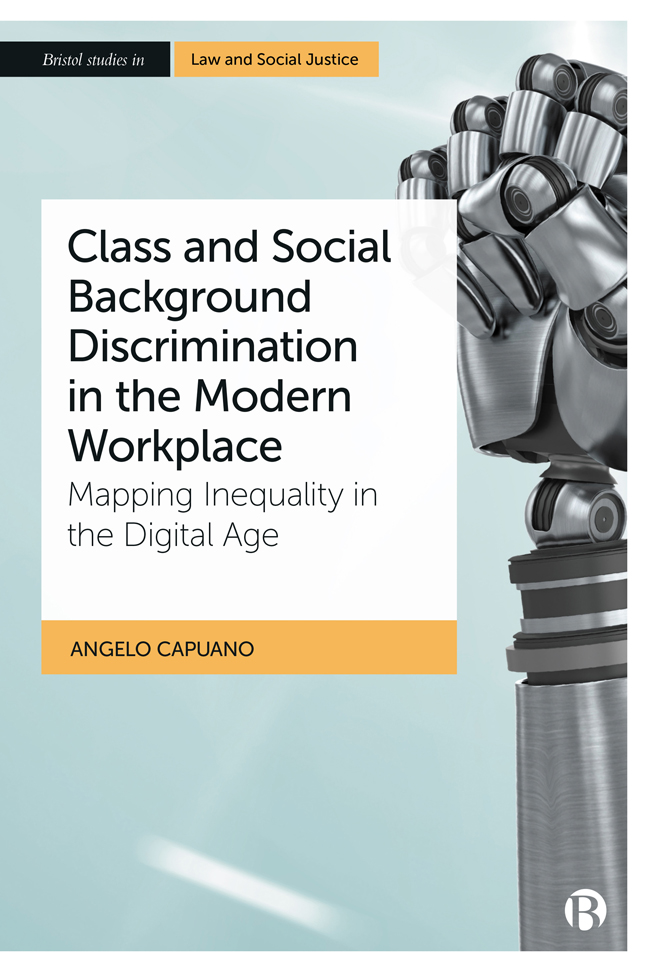 Class and Social Background Discrimination in the Modern Workplace
Class and Social Background Discrimination in the Modern Workplace Book contents
- Frontmatter
- Dedication
- Contents
- Detailed Contents
- Series Editor Preface
- About the Author
- Acknowledgements
- 1 Class and Social Background Discrimination: An Introduction
- 2 Unravelling the Meaning of ‘Social Origin’ Discrimination in Conventions of the International Labour Organization (ILO) and its Applications in the Digital Age
- 3 Mapping the Legal Landscape in Australia, South Africa, Canada and New Zealand and its Applications in the Digital Age
- 4 Social Media in Recruitment, Hiring and Firing Decisions
- 5 Automated Candidate Screening, Algorithms and Artificial Intelligence in Recruitment
- 6 Platform Work and the Post-Pandemic Shift to Remote Work
- 7 Making Future Workplaces Fairer and More Equitable
- References
- Index
4 - Social Media in Recruitment, Hiring and Firing Decisions
Published online by Cambridge University Press: 23 January 2024
- Frontmatter
- Dedication
- Contents
- Detailed Contents
- Series Editor Preface
- About the Author
- Acknowledgements
- 1 Class and Social Background Discrimination: An Introduction
- 2 Unravelling the Meaning of ‘Social Origin’ Discrimination in Conventions of the International Labour Organization (ILO) and its Applications in the Digital Age
- 3 Mapping the Legal Landscape in Australia, South Africa, Canada and New Zealand and its Applications in the Digital Age
- 4 Social Media in Recruitment, Hiring and Firing Decisions
- 5 Automated Candidate Screening, Algorithms and Artificial Intelligence in Recruitment
- 6 Platform Work and the Post-Pandemic Shift to Remote Work
- 7 Making Future Workplaces Fairer and More Equitable
- References
- Index
Summary
Introduction
Social media is part of the everyday lives of many people. Facebook is used by this author to connect and stay in touch with family and friends, share pictures and videos of holidays and life achievements, and engage with hobby groups and communities. Whilst Facebook is considered to be a private space, colleagues may make friend requests which opens up this personal space to those in the workplace. Other, more public, platforms are used for a different purpose. Twitter is used by this author to share a personal hobby and interest in whisky through microblogging and sharing content such as distillery tours in Scotland. Whilst Twitter is used to engage with the whisky community, colleagues in the legal sector have followed and subscribed to blog posts. This demonstrates how activities on Facebook and Twitter, though largely intended for private use, are quite easily opened up and come to the attention of those in our work lives. It also demonstrates how others, such as recruiters and potential future employers, can peer into our private lives through a computer screen.
This blurring of the lines between personal life and work life, and the capacity of employers and recruiters to infiltrate this personal life as it is shared in cyber space, may create significant opportunities for discrimination based on class and factors reflective of social background. This chapter will focus on examining three uses of social media by employers and/or recruiters which may create risks of this type of discrimination: (1) cybervetting; (2) job advertisement targeting; and (3) termination of employment for an employee's social media posts.
Part I will examine the use of social media to vet or screen job candidates (cybervetting), to expose how this creates opportunities for adverse distinctions to be made based on a job candidate's class (social and cultural capital), family or relatives. Part II will then examine the use of job advertisement targeting on platforms such as Facebook and LinkedIn, to show how its use can exclude job seeker's based on their locality and geographical location. Finally, Part III will examine the use of social media to terminate an employee's employment for social media posts, to highlight how this may, in certain circumstances, be based on factors reflective of the employee's class such as embodied cultural capital.
- Type
- Chapter
- Information
- Class and Social Background Discrimination in the Modern WorkplaceMapping Inequality in the Digital Age, pp. 127 - 149Publisher: Bristol University PressPrint publication year: 2023


